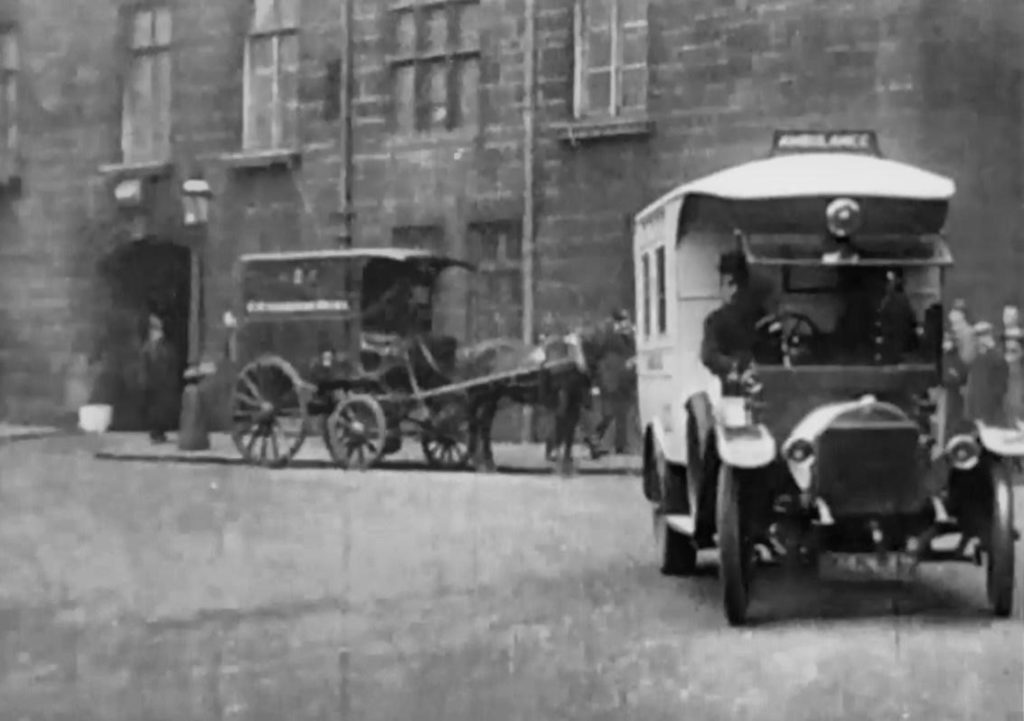Whose Body? dramaturg Patrick Runfeldt investigates the process of detectives and coroners in turn-of-the-century London.
‘The office of coroner is of so great antiquity, that its commencement is not known. By some it is said to be coeval with that of sheriff…’– Coroner’s Act of 1887
The coroner’s inquest exists to determine the circumstances surrounding a suspicious death and to adjudicate such circumstances up to a point of determining the cause of death and its perpetrators or that a death is accidental. This was only in the case where a body was found under suspicious circumstances, such as a body with a bludgeoning injury in a bathtub, or if the cause of death could not immediately be determined. The coroner had the power to “cause felons to be apprehended, as well those that have been found guilty after inquisition, as those suspected of guilt, or present at the death, and not guilty” (Jervis 2).
Any suspicious death was legally bound to first have an inquest before someone could be tried for murder. The most likely cause of the inquest in the play was twofold: 1. Thipps did not know how the body got into his bathtub; and 2. Dr. Grimbold and Dr. Freke had a difference of opinion on how the subject had died, which rendered their cause of death on a death certificate inconclusive. Once called, the coroner immediately had to form a jury for the inquest and establish a time and place, as well as detaining any potential suspect(s) to prevent them from escaping the offices of the law in the interim between the time of death and the date and time of the inquest, even though it had to be held within five days of the date of death. Juries were composed of “not less than twelve and not more than twenty-three good and lawful men” (Jervis 6) so the room at the inquest is certainly full. The jury is first sworn in and then view the body immediately after before proceeding to the trial. Additionally, not only are inquests public but “the public have a right to be present” (Jervis 20) and all inquests were public record.

Lord Peter’s representation of the family was a precursor to what we may now call power of attorney, but much less formal. The expression could be used to transfer speaking power to one’s butler when sent on an errand where they needed to speak in a formal capacity or to indicate that someone is speaking for the family at an engagement. In capacity of the inquest, Lord Peter also may have been there in the case that proceedings continued towards incriminating the accused, at which point he could take the stand as a “person who knows anything material with reference to the cause of death” (Jervis 20) and defend the witness with what he has already gathered from examining the body. No one could have been convicted here, as there is no formal verdict passed down and the jury is not even sworn to secrecy as a trial jury would be. Additionally, while council was not required, the Coroners Act of 1887 gives rights to “any person who is likely to be accused by the verdict, to be represented by counsel if they so desire it” and it was at the discretion of the coroner as to who within the circumstances was eligible for legal counsel. It is not so much that our coroner forgot that the accused had a right to counsel but that he decided that the evidence was mounting against them to the point that they should not take the stand without counsel. The result of an inquest was to either come to a benign conclusion about how the person died or to recommend charges for further prosecution.
Finally, a quick note on the organization of Scotland Yard. Under the Commissioner who was appointed by the Crown and had largely independent authority, there were four Assistant-Commissioners who oversaw various wings of the police force: Administrative (think HR – hiring and firing), Criminal Investigation Department, Public Carriage Department, and complaints and inquiries from the public. Six Chief Constables fall underneath them where “one of these assists in the administration of the Criminal Investigation Department, the remainder control districts of four or five adjoining divisions” (Dilnot 18). Each district has a branch organized into ranks led by “a superintendent, with a chief-inspector as second in command” (Dilnot 19) and was broken into the below roles by descending seniority:
| Uniform Branch | Detective Branch |
| Sub-divisional Inspectors | {Divisional Detective-Inspectors {Central Detective-Inspectors |
| Inspectors | Detective-Inspectors |
| Station-Sergeants | First Class Detective Sergeants |
| Section-Sergeants | Second Class Detective-Sergeants |
| Constables (reserve) | Third Class Detective-Sergeants |
| Constables (according to seniority) | Detective-Patrols |
Some detectives did have specialization in a particular type of crime, but most could handle any investigation and it was usually who was closest to the scene of the crime who was awarded first pass. Their specific procedure in the event of a murder would be to detail the state of the body and relay it and the details of the crime scene to several police stations typically via phone. “Not a thing is moved until a minute inspection has been made, plans drawn, photographs taken, notes made, and finger-prints sought for” (Dilnot 28) though they may bring in experts to settle items such as ballistics or handwriting. The inspector then begins making inquiries with all witnesses and people with potential knowledge of the crime and then working their way outwards to all persons who are mentioned in those initial interviews. The final piece is to broadcast a description of the murderer (if there is one available from a witness) to all local policemen and transit stations to try and establish a perimeter. All this is to say that Sugg and Parker’s lives would be difficult with the lack of obvious evidence and the incoherence of the initial witnesses.
Works Cited:
Dilnot, George. Scotland Yard: The Methods and Organisation of the Metropolitan Police. Percival, Marshall, & Co, 1915, Project Gutenberg., www.gutenberg.org/files/31629/31629-h/31629-h.htm#Page_16.
Jervis, Sir John. The Coroner Act, 1887. Edited by Rudolph E Melsheimer, 5th ed., H. Sweet & Sons, 1888, Forgotten Books, www.forgottenbooks.com/en/readbook/TheCoronersAct1887_10635760#18.

